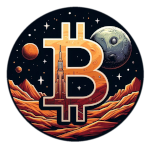Ethereum community member Ryan Berckmans has outlined five key reasons why he believes Solana cannot achieve the status of a global blockchain backbone, a position he firmly asserts belongs to ETH. Berckmans argues that Ethereum’s focus on Layer 2 (L2) scaling positions it as the foundation of a new global financial system, while Solana’s architectural choices and history present insurmountable obstacles.
Berckmans’ argument comes in response to suggestions that Solana could pivot to become a backbone similar to Ethereum. He acknowledges Solana’s recent success in decentralized finance (DeFi) and meme-driven growth, but contends that Solana’s leadership is beginning to recognize the growing dominance of L2 solutions.
According to Berckmans, Solana initially promoted a “monolithic” vision, claiming its single chain could handle global demand. This later evolved into an “integrated” approach, and more recently, an acceptance of L2s, albeit termed “Network Extensions” by Solana. Berckmans criticizes this rebranding, along with Solana’s past reporting of transaction speeds, which he alleges included consensus overhead, leading to inflated figures.
Berckmans Believes Ethereum Will Be the Backbone of the Financial System Instead of Solana
Berckmans’ core argument rests on five key points:
1. Lack of Client Diversity: Berckmans emphasizes the importance of client diversity for a global backbone, citing the need for multiple independent programs running in parallel to prevent attacks and accidents. He notes that Ethereum has four production chain clients meeting these criteria, while Solana has only one, with a second still under development and facing significant delays. He argues achieving true client diversity for Solana remains a distant prospect.
2. High Bandwidth Requirements: Berckmans points to Solana’s high bandwidth requirements (a recommended 10Gbps upload) as a major centralization risk. He argues that a global backbone must be operable anywhere, a requirement hampered by Solana’s demanding bandwidth needs. He further notes that this requirement is likely to increase over time, exacerbating the issue.
3. Risk of Future Outages: Berckmans highlights Solana’s history of network halts, contrasting it with Ethereum’s ability to continue producing blocks even when finalization is disrupted. He stresses the critical need for uninterrupted operation for a global backbone handling trillions in assets.
4. Lack of Economic Decentralization: Berckmans criticizes Solana’s token distribution, noting that only 2% of the initial coin offering (ICO) was sold publicly, compared to Ethereum’s 80%. He argues this high insider allocation creates centralization risks and undermines Solana’s suitability as a global backbone.
5. Focus on L1 Execution Scaling: Berckmans contrasts Solana’s focus on Layer 1 (L1) execution scaling with Ethereum’s L2-centric approach. He argues that zero-knowledge (zk) proof aggregation allows ETH to handle settlement for numerous L2s without sacrificing decentralization. He posits that Solana’s prioritization of L1 scaling is a liability for a global backbone requiring maximum decentralization and neutrality.
Berckmans concludes that Ethereum’s strategy of serving as a backbone for L2s is the superior approach, and while Solana may attempt to emulate this model, its fundamental limitations prevent it from achieving this goal. He reiterates his belief that Ethereum is positioned to capture the vast majority of on-chain growth and achieve global ubiquity.

